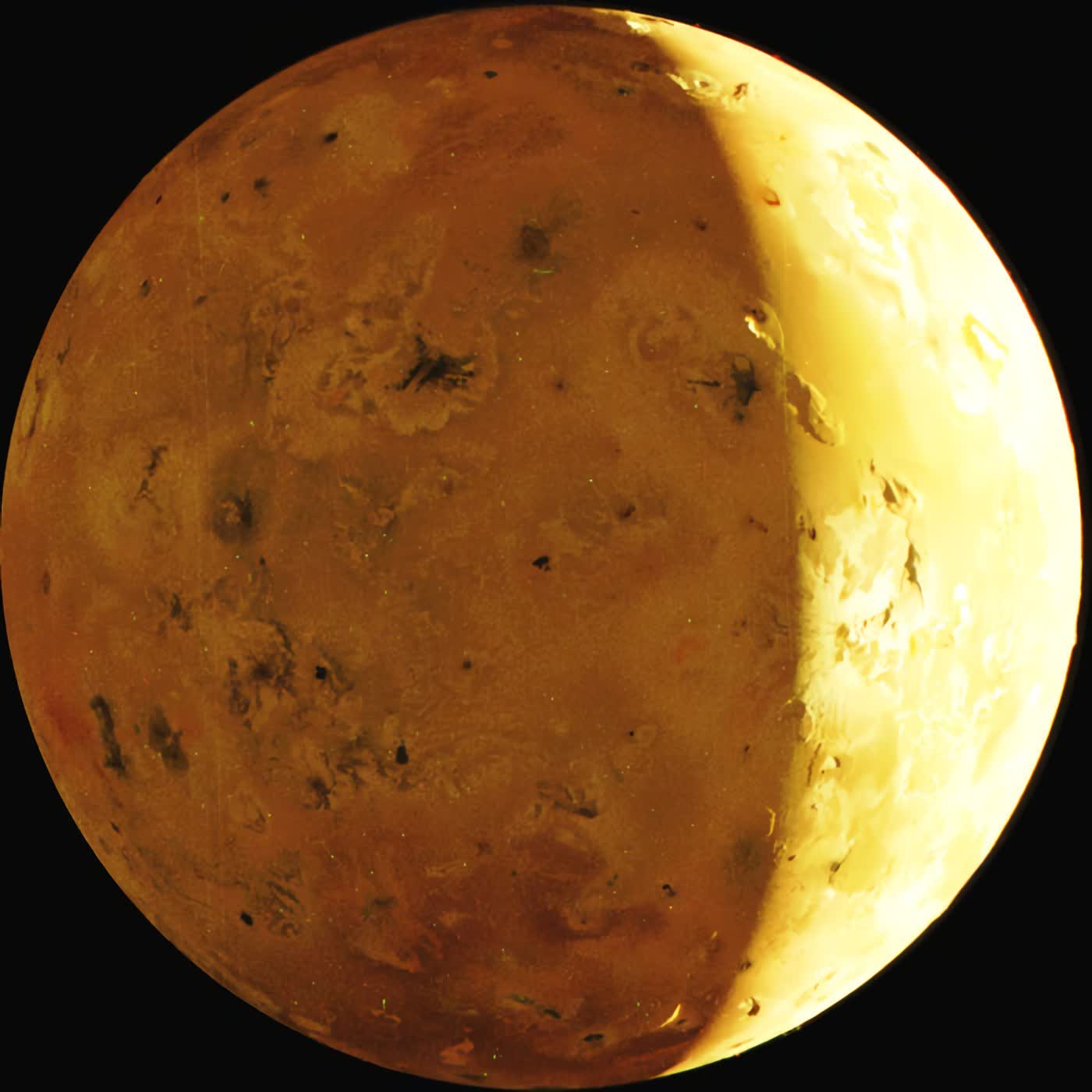What just happened? Last weekend, NASA’s Juno spacecraft made its second flyby of Jupiter’s moon Io in about a month. The first pass on December 30, 2023, was a test run for JunoCam to find the optimal viewing geometries and camera settings. At 930 miles (1,500km), it was the closest any craft had been to the moon since Galileo skimmed the surface from 62 miles (100km) up in January 2002.
Saturday’s flyby provided NASA with many raw images, which it released to citizen scientists for post-processing. Juno’s close pass allowed for outstanding high-resolution photos (above and below) of the highly volcanic satellite, including twin plumes from two vests from one “giant” volcano (or two close together) that spewed molten lava dozens of miles into the sky, with gas and dust reaching over 200 miles into space.
Io is slightly larger than the Earth’s moon and has around 400 active volcanoes, making it the most volcanic world in our solar system. Its largest is Loki Patera, about twice the size of Hawaii’s Mauna Loa. NASA calls Io a “tortured moon” because of this tumultuous activity.
ð On Feb. 3, the #JunoMission captured two volcanic plumes rising above Jupiter’s moon Io – either two vents from one giant volcano, or two volcanoes near each other. The team will be analyzing this against additional data from Juno and other missions to get a better… pic.twitter.com/CEgZMG2rSQ
– NASA Solar System (@NASASolarSystem) February 6, 2024
The images show what appear to be many impact craters. However, lava quickly fills impacts, leaving no trace. The dark spots (below) are the remnants of collapsed volcanoes. Massive lava flows will eventually bury these, too.
Scientists want to learn more about what makes Io so violent. The Jovian probe’s latest flybys could provide some clues. In addition to imagery, Juno collected reams of data to analyze.
Since Io appears to have a magnetic field, scientists think it has a solid iron core. Its surface seems to be just a thin, constantly changing crust floating on molten rock. This hypothesis explains the constant eruptions and huge fiery lakes of lava that cover the surface.
The prominent theory suggests that Io cannot cool because it is the object of a tug-o-war between Jupiter and its largest moons, Ganymede and Callisto (with some help from Europa). The tidal pull from these large masses creates constant friction on Io, lending to its volcanic activity.
NASA is unsure of the contents of Io’s mantle. One line of reasoning is that it’s primarily molten sulfur. This supposition would explain the moon’s yellowish tint and sulfur dioxide atmosphere. However, measurements indicate that the molten composition is too hot to be sulfur and may consist primarily of silicate rock. Perhaps Juno’s latest runs can provide the answers.
You can browse all of NASA’s JunoCam images as well as processed public submissions on the space agency’s website.



